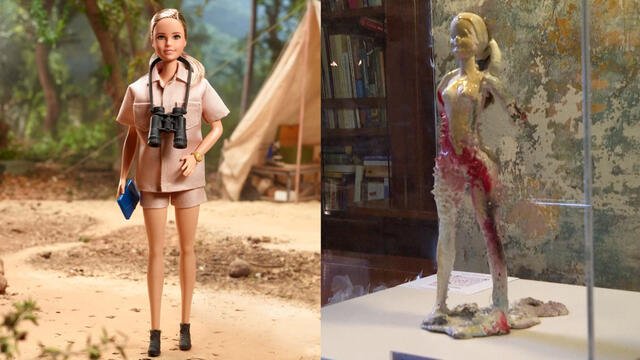Majd Henawi, born in 1993, is a rising artist in Syria, contributing to the country’s cultural revival amid the ongoing war.
He graduated from the Faculty of Fine Arts at Damascus University in 2017, specialising in Painting and Drawing. For his graduation project, he examined twenty art pieces that explored eastern ideas and spiritual themes, drawing on Impressionism and Surrealism to depict the Arab region.
At present, Majd lectures at the Faculty of Fine Arts in Damascus, leading various workshops in collaboration with different organisations.
Majd’s work gained recognition when he won the Syrian Annual Spring Exhibition Award in 2019, marking a significant milestone in his career. In 2020, he received a grant from the Ettijahat Foundation’s Ajyal programme for independent culture, which helped him continue pursuing his artistic journey.
His first solo exhibition, Black and White, was at the National Centre for Visual Arts in Damascus in 2019. In this show, he presented his work, focusing on the struggles people face in life, using black and white colours and dynamic brushwork to convey complex emotions.
After his first exhibition, Majd participated in various international exhibitions and workshops, including the Carthage Days of Contemporary Art in Tunisia in 2019, the Arab Art Exhibition in Beirut in 2022, and Expo Dubai 2020 as part of the Syrian Pavilion.
In 2022, he created a visual installation called Doors, which symbolised the strength and hope of Aleppo. This installation was then displayed at the Once Upon a Time Aleppo exhibition, organised by the Madad Art Foundation.
Preserving memories of Syria
Each artist has a unique style that makes their work special, and Majd is no different. His art stands out because it focuses on personal memories, giving us a glimpse into Syria from the perspective of someone who has lived through the war.
Many of his pieces depict Syrian buildings, cities, and skylines. Although much of this infrastructure is now damaged, the pieces still highlight the country’s beauty.
One notable example is Majd’s surrealist portrayal of Yarmouk Camp, an area south of Damascus that has experienced significant destruction. He paints the damage, but also the light, showing that hope is still there.
Speaking to The New Arab about his area of focus, he said: “As a Syrian artist, Syria is my primary source of inspiration. It includes my childhood, family, friendships, and where I studied. It holds a special place in my heart, and its environment and nature serve as the foundation of colours and shapes in every piece I create.”
Majd adds, “For every artwork I create, personal emotions are involved, as it is a process that goes through multiple stages until completion. In general, I want to communicate that each of us has a story we wish to tell beautifully.”
In addition to bringing memories and emotions to life, Majd’s work also aims to highlight humanitarian and social issues in a way that connects with today’s culture. He believes that art is essential for the growth of societies.
Participation in the Home exhibition
Majd’s latest exhibit this year was part of curator Nour Salman’s exhibition, Home, in February 2024.
Nour, a British-educated art curator who runs Artvision, one of Syria’s leading art organisations, noted that it was one of her most popular exhibits this year.
During the Home exhibition, Majd’s work aimed to show the connection between people and their homeland. Using bright colours and landscapes, he expressed the complex feelings individuals have for their land, bringing to life memories that many Syrians can relate to.
The Home exhibition also showed how Syrian art has changed in recent years.
“The war has affected everyone,” Majd explained. “Through art, we are now seeing different views of the disaster in a creative way. More and more, Syrian art is being used as an outlet and a way for a generation that grew up during conflict to express themselves.”
Reading a piece from the exhibit, Majd shared with The New Arab: “He looked up at the sky, then down at the ground, contemplating. He closed his eyes. Shadows and colours intersected in harsh rifts. He felt the tenderness of God and homeland and said, ‘Everything is capable of being reshaped anew, but the problem, my friend, is that life is both beautiful and unsettling!'”
Art that resonates with others
To date, Majd has received incredible support and positive feedback for his work.
Nour describes him to The New Arab as “a very creative, hard-working, and ambitious artist.”
Nour concluded, “The feedback from the Home exhibition was mainly positive because the topic resonated deeply. The connection that anyone has with their hometown or childhood stays with them for life, along with the beautiful techniques and colors he used, which elevated the entire exhibition.”
Similarly, one attendee of the Home exhibition remarked, “Henawi’s artworks uniquely depict Syrian landscapes with a twist on what is familiar to us. The use of space and horizons makes these locations immediately recognisable, especially as Syrian landscapes have changed during the war.”
Another attendee added, “When we look at Syrian cities today, we see a mix of destruction, history, civilisation, and beauty. Majd’s works clearly show that contrast, giving a relevant perspective.”
Reflecting on the feedback, Majd tells The New Arab that he considers this exhibition a success story — a milestone achieved after countless hours of hard work. “What is beautiful about people’s reactions is seeing each individual’s perspective on the details — everyone reflects their view based on personal principles and values.”
Majd added that every time someone spots a new detail or focuses on a specific theme in his canvas, it brings him satisfaction, and it is this unique perspective from each individual that motivates him.
What’s next for Majd?
Despite the positive response to the Home exhibition, Majd acknowledges that being an artist in Syria presents significant challenges.
Life in a country facing numerous issues is not easy; a lack of funding, materials, and opportunities, combined with fierce competition, forces many creatives to improvise with limited resources.
That said, Majd admits that he confronts these challenges daily and remains committed to his artistic journey, believing that this struggle has shaped his work and pushed him to explore new ideas and techniques.
After the Home exhibition, Majd is already thinking about his next steps and is excited about the potential for new projects and collaborations that can highlight this ongoing change in the art scene.
Danny Makki is an analyst covering the internal dynamics of the conflict in Syria, he specialises in Syria’s relations with Russia and Iran
Follow him on X: @danny_makki





